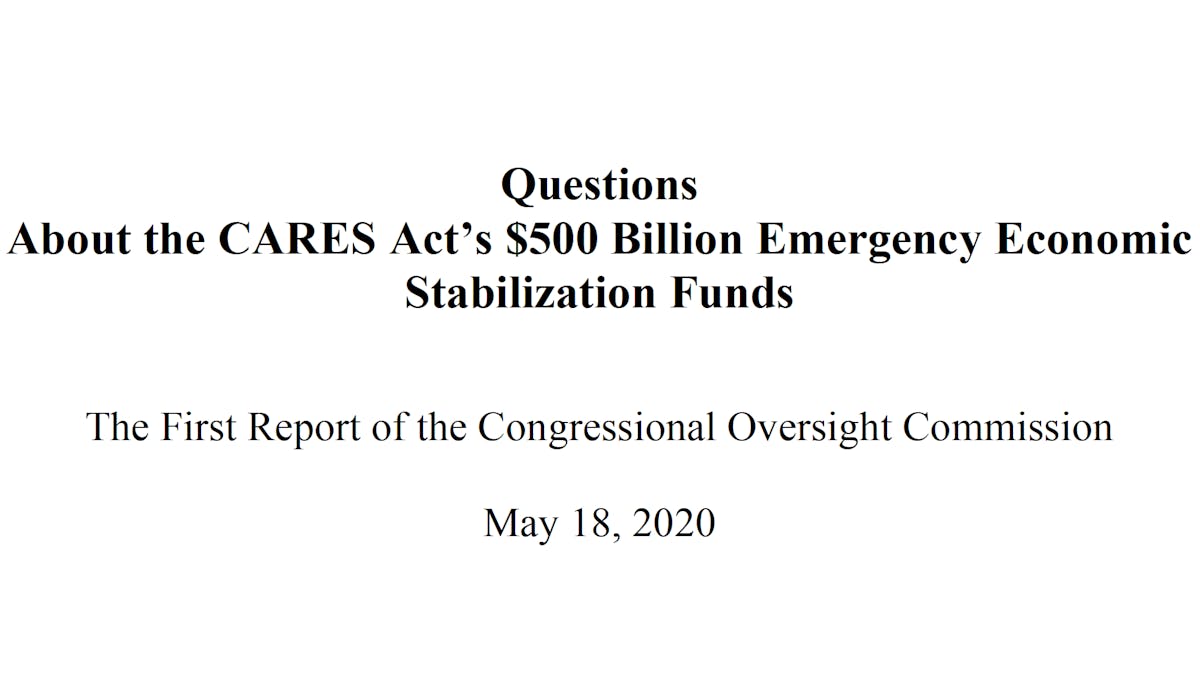Report
Congressional Oversight Commission: Questions about the CARES Act’s $500 billion emergency economic stabilization funds
In its first report, the Congressional Oversight Commission publicizes a list of questions it has posed to Treasury and the Federal Reserve about their handling of the $500 billion set aside to support companies and state and local governments.

In its first report, the Congressional Oversight Commission publicizes a list of questions it has posed to Treasury and the Federal Reserve about their handling of the $500 billion set aside to support companies and state and local governments.
The Congressional Oversight Commission is one of several safeguards built into the CARES Act that aim to ensure the government’s actions justify the measure’s $2.2 trillion price tag. Its role is to report on how Treasury and the Fed are spending the $500 billion set aside to support companies and state and local governments, and how those choices affect the financial well-being of Americans and the broader economy.
In its first report, released in mid-May, the COC notes that only $37.5 billion of the money has been spent. It summarizes decisions to date by Treasury and the Fed, including the programs they had announced the previous month, and poses 52 questions that it wants Treasury and the Fed to answer.
Unlike other oversight entities, like the Government Accountability Office, the COC did not exist until it was created under this law. Lawmakers have appointed three lawmakers and one former staffer to the group. But they have yet to name a chairperson.
The Congressional Oversight Commission was created by the CARES Act stimulus law to oversee economic stability efforts by the Treasury and Federal Reserve. It has two members appointed by the leadership of each party, and a chairperson appointed by both. As of mid-July, the Commission had released two reports and lacked an appointed chair, staff, or a budget.